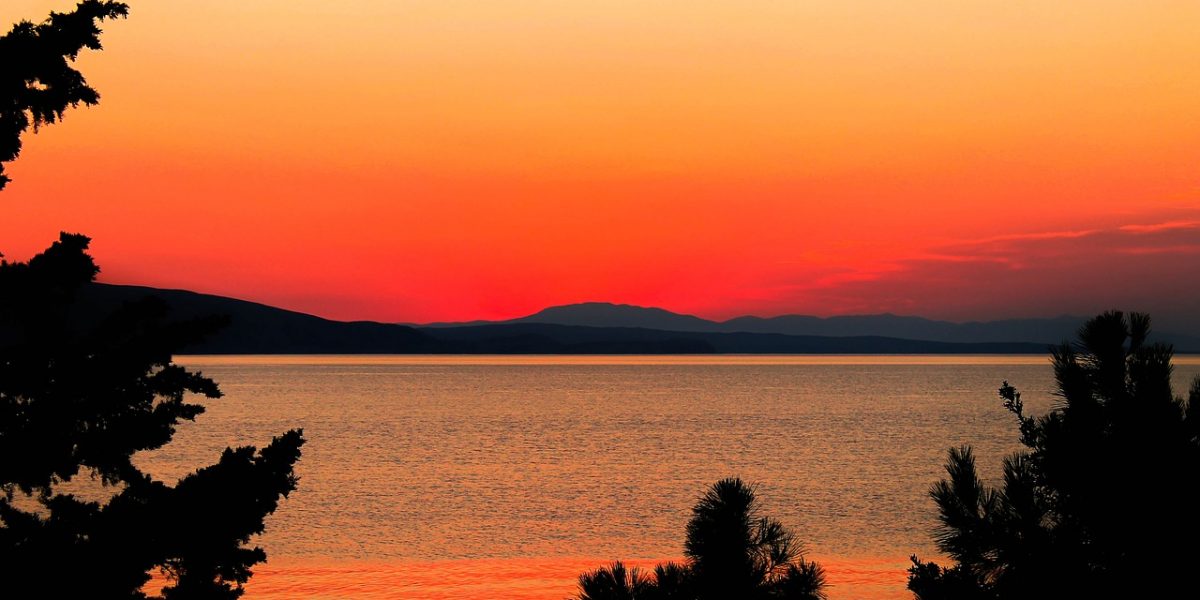
Camping in Croatia Insider's Guide
1. What Can You Find in This Blog Post?
Hello everyone! Welcome to our first blog post. In this post, we are going to write about camping in Croatia and answer questions like – What is Croatia like and known for? Which places to visit while camping in Croatia? What is gastronomy like in Croatia? Why is Croatia the best pick for camping?
2. What is Croatia like and known for?
Croatia has a lot of natural beauty like forests, mountains, rivers, lakes, and islands. There is something for anyone who decides to visit and explore Croatia.
The Adriatic coast enjoys a Mediterranean climate of hot, dry summers and cool, rainy winters. Summer temperatures range on average from 26 to 32°C in the coastal region, 22 to 30°C in the continental region, and 15 to 20°C in the mountain region. Winter temperatures range from 5 to 10°C in the coastal region, -5 to 10°C in the continental region, and -5 to 0°C in the mountain region.
Croatia is well known for its national parks and monuments of which ten of them are UNESCO World Heritage sites.
Croatian gastronomy offers a blend of various regional recipes, from spicy inland specialties to Dalmatia’s Mediterranean-based cuisine. Mediterranean gastronomy is said to be one of the healthiest in the world, closely related to people’s well-being and vigor.

3. Which places to visit while camping in Croatia?
The most popular places to visit while camping in Croatia are National Park Plitvice lakes, National Park Krka, Kornati National Park, Pula Roman Arena, Dubrovnik Old Town, and Zadar Romanesque Churches.
For the continental part of Croatia, we recommend visiting: Kopacki Rit Nature Park, Karlovac, and Rastoke.
National Park Plitvice Lakes

The Plitvice Lakes National Park is the oldest and largest national park in Croatia. It is a 295-sq.-km forest reserve in central Croatia. It’s known for a chain of 16 terraced lakes, joined by waterfalls, that extend into a limestone canyon. Walkways and hiking trails wind around and across the water, and an electric boat links the 12 upper and 4 lower lakes. The latter is the site of Veliki Slap, a 78m-high waterfall.
Besides the striking landscape beauty and the processes that continue to shape the lakes, the park is also home to noteworthy biodiversity. The tufa barriers themselves provide habitat for diverse and highly specialized communities of non-vascular plants. Brown Bear, Grey Wolf, and Lynx along with many rare species roam the forests, while the meadows are known for their rich flora.
National Park Krka

Krka National Park is situated along the Krka River in southern Croatia. It’s known for a series of 7 waterfalls. In the south, Skradinski Buk waterfall is flanked by traditional watermills. To the north, a nature trail passes another striking cascade, Roški Slap, and the Krka Monastery, built above ancient Roman catacombs. Visovac Island is home to the 15th-century Franciscan Monastery of Our Lady of Mercy.
Kornati National Park

The Kornati National Park is often mentioned as a “nautical paradise” in tourist publications. And, in “slalom” sailing through the 89 unforgettable islands, islets, and reefs in the Kornati National Park, you will test all of your nautical skills, particularly if the weather puts in some effort. This stunning park is a popular destination for diving, sailing, camping & hiking.
Pula Roman Arena
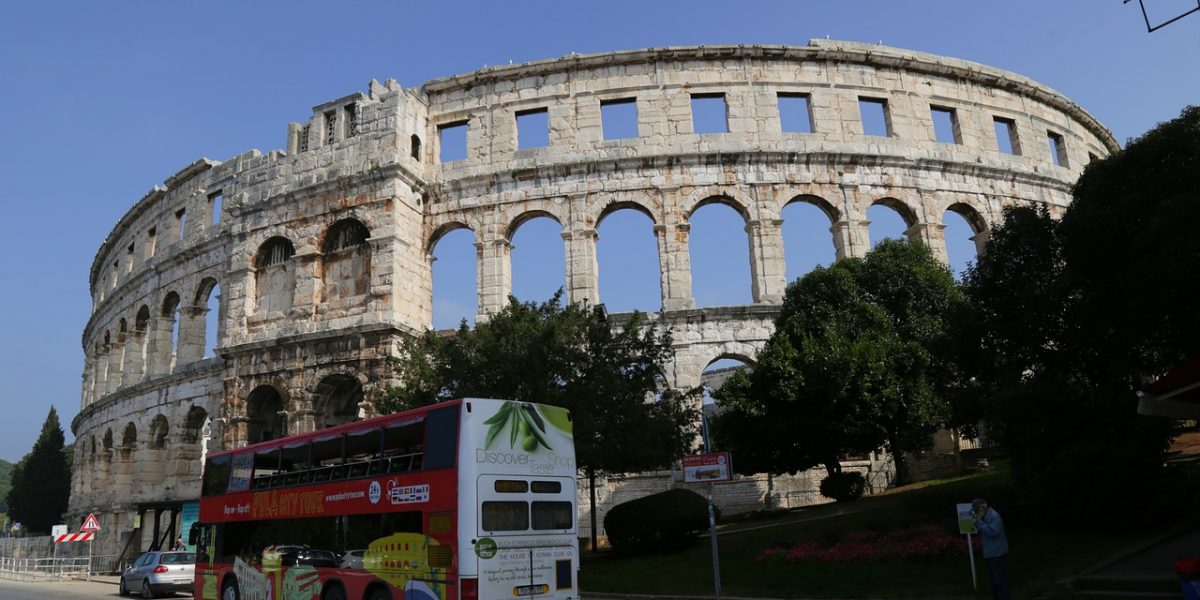
The Pula Arena is a Roman amphitheater located in Pula, Croatia. It is the only remaining Roman amphitheater to have four side towers entirely preserved. It was constructed between 27 BC and AD 68 and is among the world’s six largest surviving Roman arenas.
Dubrovnik Old Town Walls

At the heart of the city, the Old Town is enclosed by medieval walls with battlements offering views of the Old Port. Art, weapons, and photos are on display at the Cultural History Museum in the Gothic-style Rector’s Palace, a film location for TV’s “Game of Thrones.” Bars, seafood restaurants, and traditional eateries dot the area, and pedestrianized Stradun Street is lined with souvenir shops and fashion stores.
Zadar Romanesque Churches
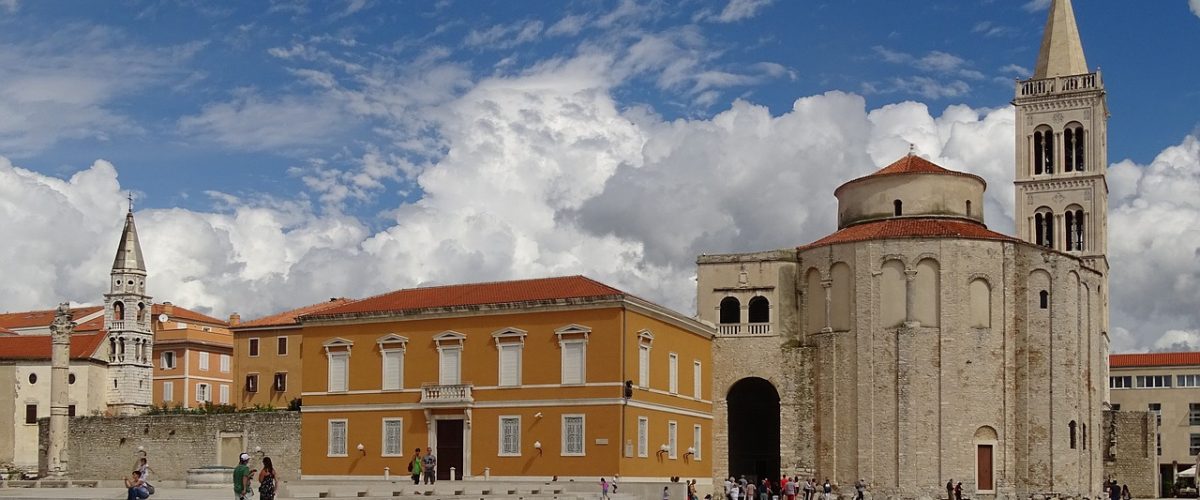
The Church of St Donatus is a church located in Zadar, Croatia. Its name refers to Donatus of Zadar, who began construction on this church in the 9th century and ended it on the northeastern part of the Roman forum. Originally named Church of the Holy Trinity, in the 15th century it was re-dedicated to St Donatus
Kopacki Rit Nature Park

Kopački Rit is a nature park in eastern Croatia in the municipalities of Bilje and Kneževi Vinogradi. A part of Kopački Rit has been designated as a zoological reserve. Around 260 various bird species breed here. Many other species use this area as a temporary shelter on migration from the northern, cooler regions to the southern, warmer areas and vice versa. There are around 40 fish species and mammals in the area including red deer, roe deer, wild boar, European wildcat, pine marten, stone marten, least weasel, sable, and the Eurasian otter. Kopački Rit also has over 140 recorded species of plant—some of which are very rare and only found in a few places in Croatia.
Karlovac
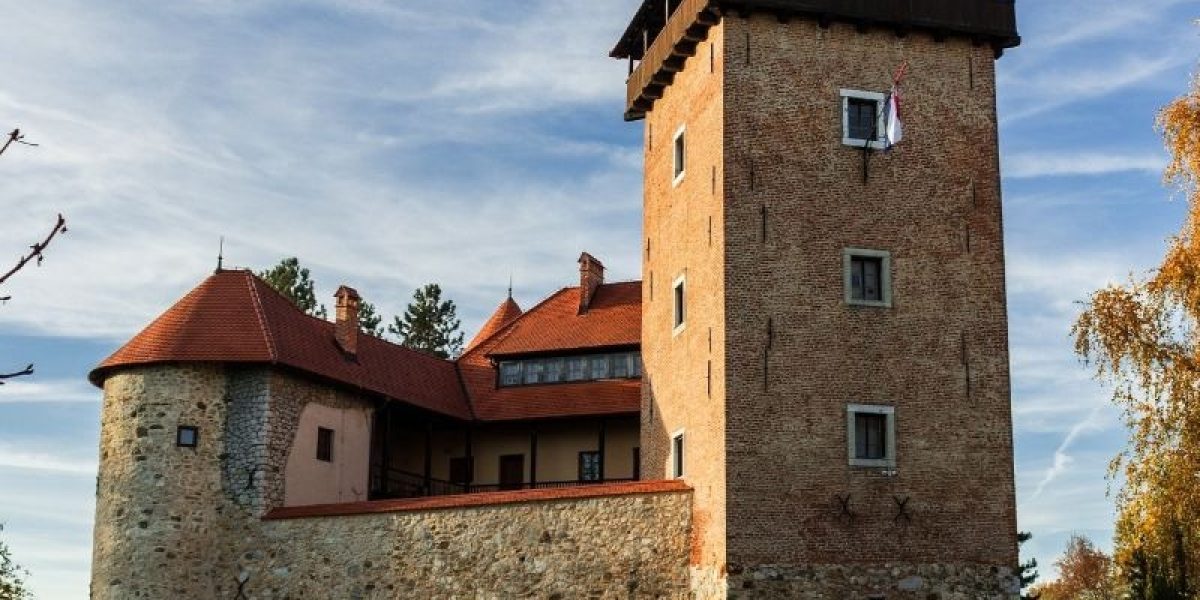
Built as the six-pointed fortress of Karlstadt by the Habsburgs in the late 1500s, Karlovac is a verdant regional capital set at the confluence of four rivers. Many historic landmarks remain, along with one of the biggest freshwater aquariums in Europe, excellent restaurants, galleries, and museums.
Rastoke
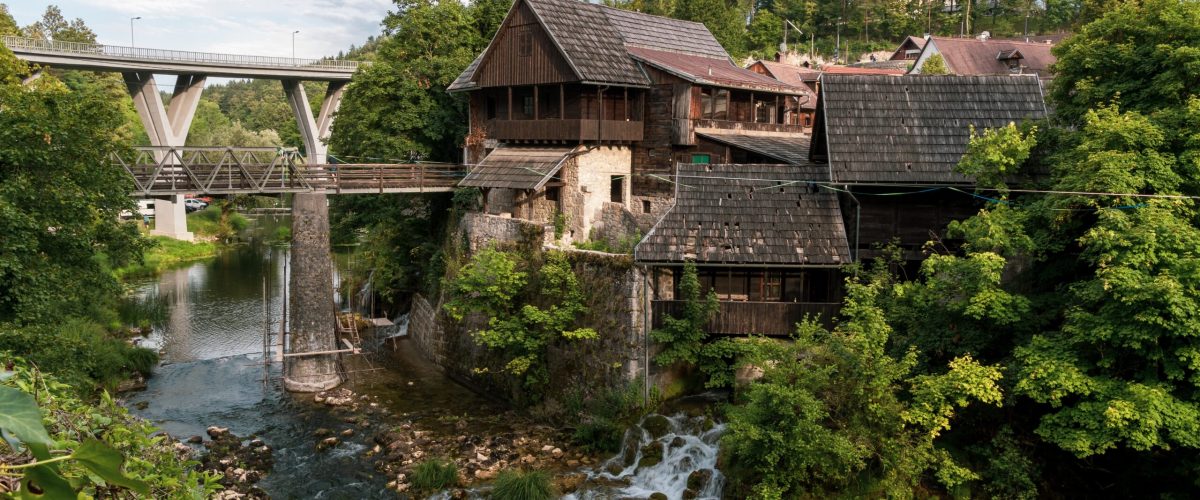
Rastoke is a village, located in the Town of Slunj, known for the Slunjčica River, which flows into the Korana River at Rastoke. Rastoke is also known under the name “city of cats” because statistically, it is the city with the most cats per person in Croatia.
In different posts, we will cover more places with more details.
4. What is gastronomy like in Croatia?
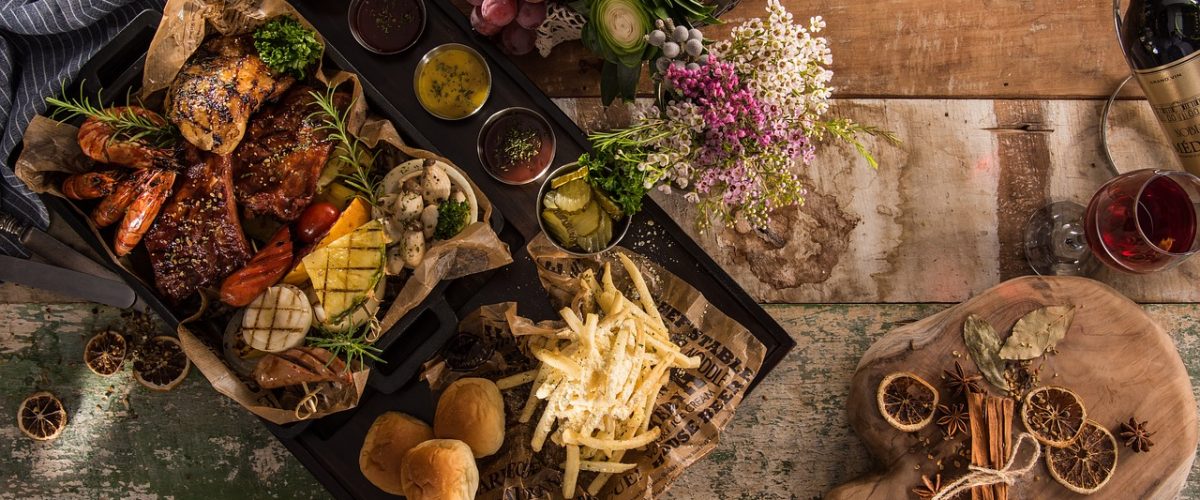
Embark on a culinary odyssey through Croatia, where coastal freshness and continental richness converge to create a tantalizing gastronomic experience:
- Mediterranean Marvels: Along the Adriatic coast, indulge in seafood treasures like “Brudet” (fisherman’s stew) and “Crni Rižoto” (black risotto with cuttlefish ink).
- Continental Classics: In the heartland, explore robust dishes such as “Čobanac” (spicy meat stew) and delicate pastries like “Štrukli,” reflecting Slavic and Hungarian culinary traditions.
- Peka Magic: Experience the art of Peka, where meats and vegetables slow-cook under an iron bell, creating tender, flavorful delights that embody patience and craftsmanship.
- Wine Wonderland: Toast Croatia’s diverse landscapes with local wines like Plavac Mali and Graševina, savor traditional fruit brandy, rakija.
- Sweet Endings: Delight in Croatian desserts such as “Palačinke” (thin pancakes with jams or chocolate) and festive “Fritule” (doughnut-like pastries).
Croatian cuisine is a celebration of diversity and tradition, inviting you to savor every bite and immerse yourself in the rich tapestry of flavors that define this extraordinary culinary landscape. Cheers to the joyous symphony of Croatian cuisine!

5. So, Why Camping in Croatia is the best choice?
- Enchanting National Parks:
Croatia is home to several stunning national parks, including the famous Plitvice Lakes and Krka National Parks. Camp amidst cascading waterfalls, crystal-clear lakes, and lush greenery, immersing yourself in the untouched beauty of these natural wonders.
2. Historical and Cultural Treasures:
Combine your camping adventure with a journey through history. Explore ancient Roman arenas in Pula, walk the medieval walls of Dubrovnik, and discover charming villages with a rich cultural heritage. Camping in Croatia offers not only natural wonders but also a glimpse into its fascinating history.
3. Adventure Awaits:
For the adventure seeker, Croatia provides a playground of activities. From hiking and biking in the mountains to water sports along the Adriatic coast, there’s no shortage of adrenaline-pumping experiences. Dive into the clear waters for snorkeling or explore underwater caves for a truly unforgettable adventure.
4. Culinary Delights:
Savor the taste of Croatia with its delectable cuisine. Whether you’re enjoying fresh seafood by the coast or indulging in hearty continental dishes, camping in Croatia is a culinary delight. Don’t forget to pair your meals with local wines for the perfect camping feast.
5. Warm Hospitality:
Experience the warmth of Croatian hospitality as you camp in designated sites or wild spots. The locals are friendly and welcoming, making your camping experience not just an adventure in nature but also a cultural exchange.
In conclusion, Croatia offers a camping paradise that combines natural beauty, historical charm, and a wide array of activities. Whether you’re a nature lover, history buff, or adventure seeker, camping in Croatia promises an immersive and unforgettable experience. Pack your gear, pitch your tent, and let Croatia’s wonders unfold around you.
